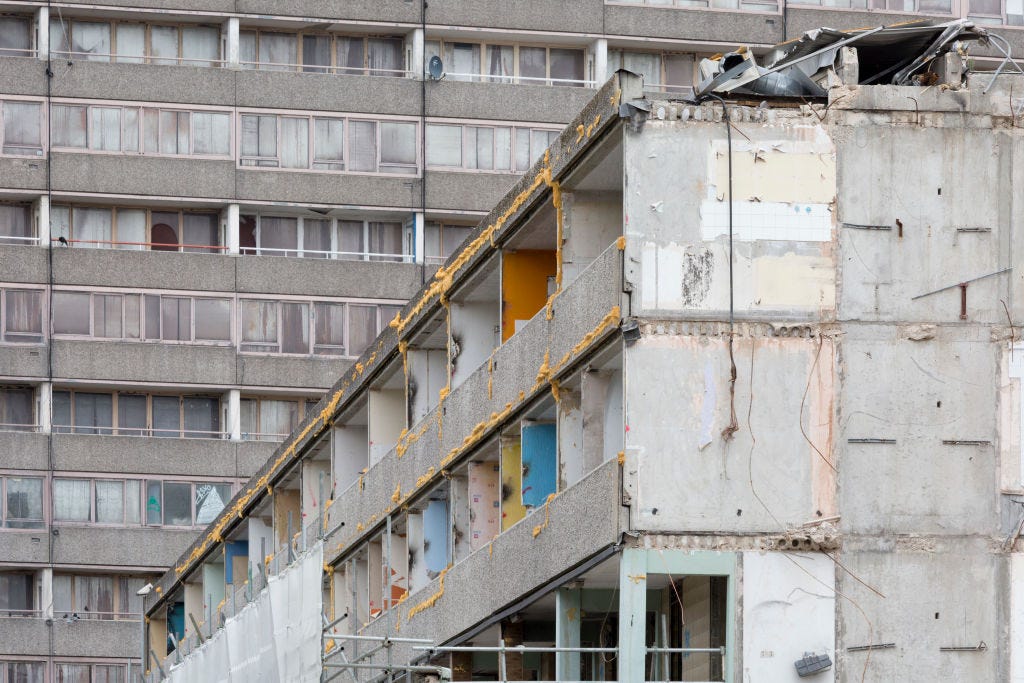Housing is not going to be a topline issue in an election that will dominated by debates about tax cuts and immigration with occasional mentions of the NHS. But it will be an important subsidiary one. Firstly, because it is a major fault line within the Conservative party, split between those who want to appeal to local NIMBY frustrations and those who see housebuilding as critical for the party’s future. Secondly, because Labour are well aware of that fault line and want to highlight it by pushing their own pro-building policies. And it has the major advantage for them of being a rare policy area where you can sound bold without promising to spend money.
There is also growing concern from voters, particularly those in cities and most of all London. In the capital housing now ranks third on YouGov’s “top issues for the public” list, behind the economy and health. As most of Britain’s politico-media ecosystem lives in London, and many younger members of it are paying extortionate rents or mortgages, that will influence coverage more than if the problem was concentrated elsewhere.
A spate of articles has appeared in the first few weeks of the year trying to push the issue higher up the agenda. For instance the FT’s John Burn-Murdoch produced a typically excellent series of graphs showing the extent of the problem.
Inevitably the focus is falling home ownership and, as John puts it, the “breakdown of a central aspirational belief”, held by younger professionals from previous generations, that they could buy their own place even if they did not have a wealthy family to help them out. Likewise, insofar as we are getting policy interventions with any level of detail from the main parties, they tend to focus on more help to buy and making it easier for private developers to get planning permission.
There is less attention on where the housing crisis is hitting hardest of all: those who have no hope of owning a home even if house prices / mortgage rates fall significantly. (Which is not to say there is no attention – organisations like Shelter and the Joseph Rowntree Foundation as well as journalists like Vicky Spratt and Chaminda Jayanetti write a lot about this group).
The problems here are increasingly acute. Last year 104,460 households with children were either threatened with homelessness or were already homeless, up 11.4% from the previous year. It will be higher again this year. 64,950 families with children were living in temporary accommodation (up 10.3%), including B&Bs. This is heavily concentrated in cities and particularly London. In some inner London boroughs more than 10% of all children are now living in temporary accommodation, usually overcrowded and not appropriate for permanent living, some for most of their childhood.
There are at least 1.1 million households living in overcrowded accommodation, and are disproportionately those with children. Another 900k households are living in homes with serious damp or mould problems, and a further 600k that are impossible to heat properly. These trends are obviously bad in themselves but also have knock on effects for other public services. It’s harder for children to do well at school when they are living in overcrowded or unsanitary housing; it causes health problems that add to the NHS load, and so on.
In the rest of the post I’m going to look at how things have got to this point; why current government and Labour policy is not focusing enough on this aspect of the housing crisis; why doing the right thing for those right at the bottom of the ladder will help those further up who nevertheless are not able to buy; and how this whole mess illustrates two of the biggest general challenges in British politics.
Keep reading with a 7-day free trial
Subscribe to Comment is Freed to keep reading this post and get 7 days of free access to the full post archives.





